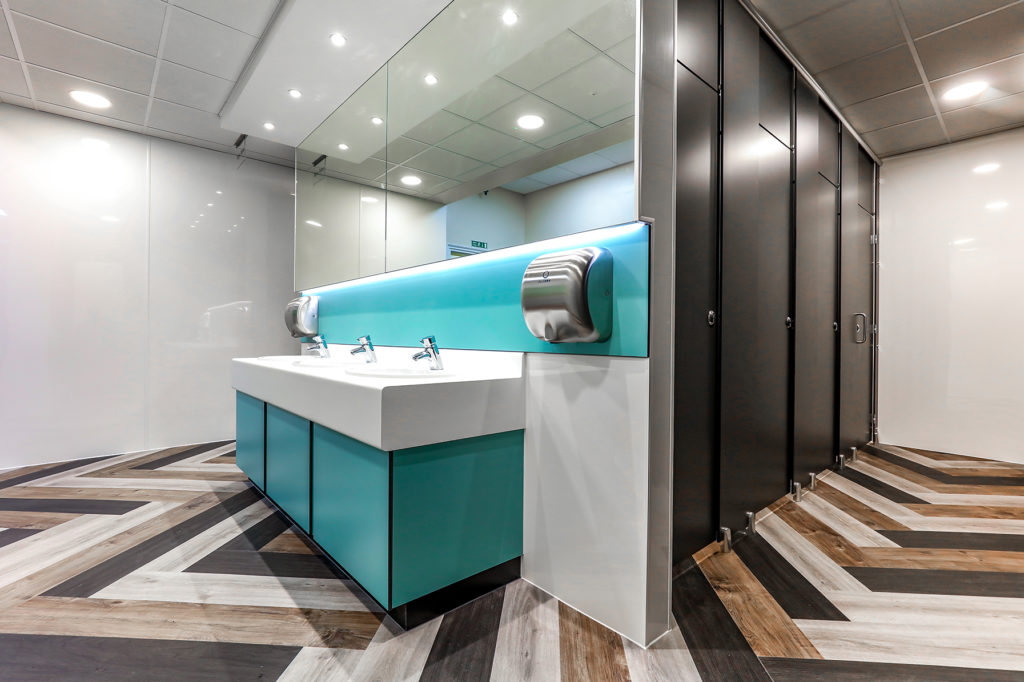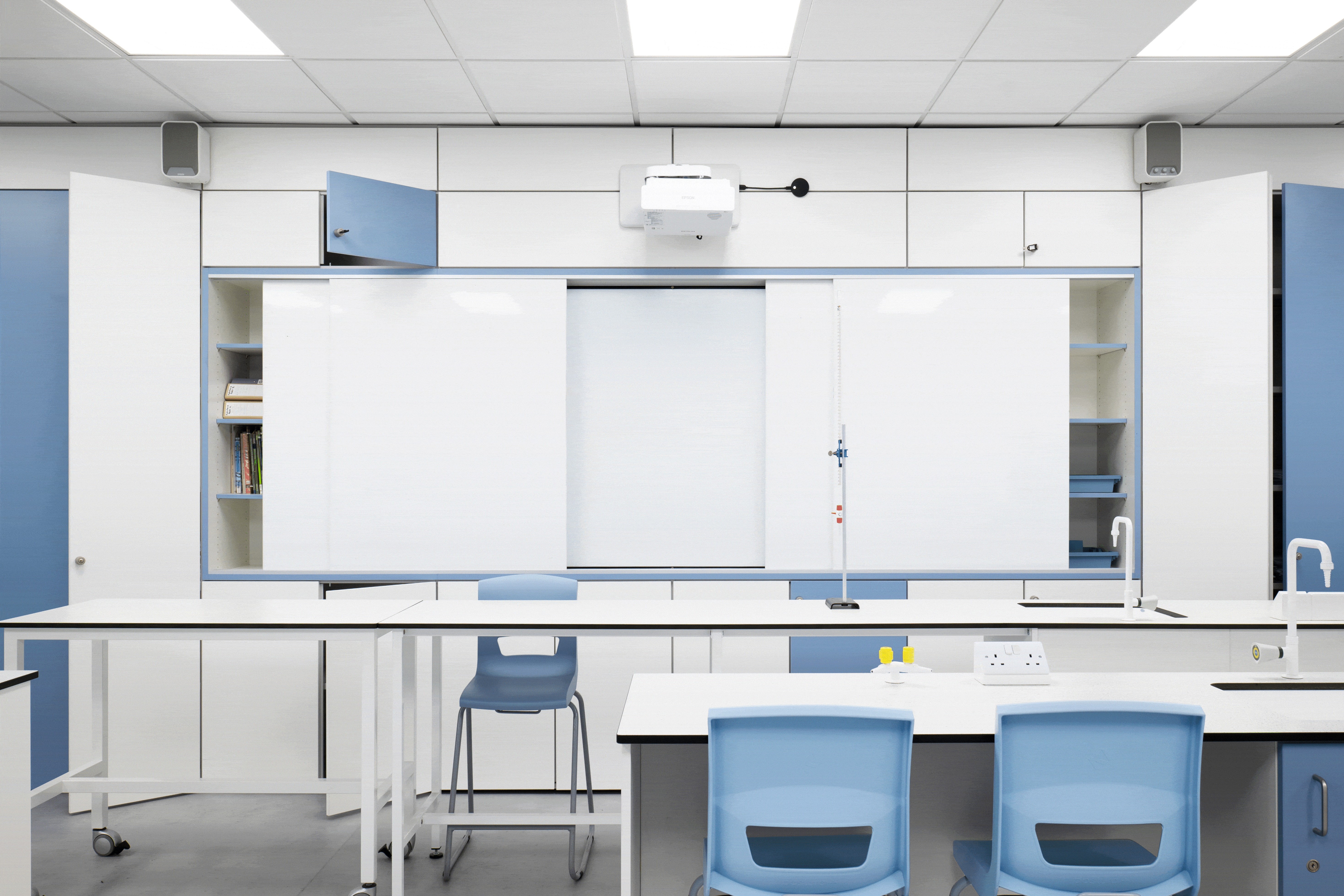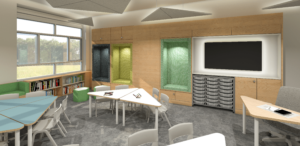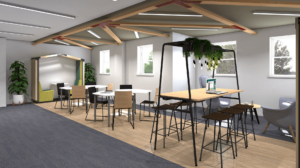The issues surrounding bullying are as old as schools themselves. Whatever a school’s location, catchment or pupil demographic, you can guarantee that with varying degrees of frequency, issues of bullying will have arisen. And whilst every school’s aim is to nurture an environment completely void of any incidents of bullying, it’s short sighting to deny the possibility of it occurring within a school setting at all.
Schools rightly spend valuable time and resources ensuring effective policies are in place to deal with any occurrences of bullying behaviour. Lesson time is devoted to giving pupils a voice; opinions and beliefs are openly shared to foster positive relationships and reduce anxieties. But an often overlooked factor in reducing bullying in schools is the layout of the building itself.
Whilst equipping children with the techniques to deter the school-bully are essential, some opportunities for intimidating activity can be completely eradicated through simple, clever design.As long as schools have been educating children, a potential bullying hotspot has always been the school toilet facilities. In 2008, a survey undertaken by a prominent children’s charity found that up to 40% of pupils feared the behaviour of their fellow students in the school toilets. Whether these children’s fears were based on real life experiences, or burgeoned as a result of ancient school toilet folklore, is unclear. But whatever the root cause, this represents nearly half a school population harbouring an unnecessary anxiety. A large part of this problem must be attributed to outdated and old-fashioned design. Design patterns and plans, that for the majority of school bathrooms, are consistently regurgitated without alteration.
But by making a few simple changes, it’s possible to reverse the preconception that school toilets are a ‘no-go’ potential danger zone.It goes without saying that the number one consideration for school toilets should be the opportunity for complete privacy. But it’s also this privacy that can create fear, especially when the secrecy is undesired. Perhaps the best way to create private spaces in the least threatening way is to provide a mixture of closed cubicles, alongside large open areas. The open areas might house the handwashing facilities and don’t necessarily need doors, allowing staff and other students to see what’s happening at all times. It’s also crucial to ensure that the quest for privacy doesn’t create any hidden corners or alcoves where children may find themselves unwittingly in vulnerable situations. This open plan design should also help to prevent any incidents of the other stigma all too often associated with school toilet areas –vandalism.You may consider that the design of the cubicles themselves is beyond reproach, but this is one area where simple design readjustment can have a large impact. By placing a handbasin inside the locked door of the cubicle, it not only increases the feeling of security, but allows the user to deal with situations that might not be effectively dealt with in more public areas. It also helps to improve general hygiene as students are less likely to rush the procedure of washing their hands in their own private toilet ‘pod’.To a certain extent, the design of washroom facilities are dictated by regulations. Policies and procedures reasonably dictate that there must be an extra door between toilet cubicles and the rest of the working school. However, regulations do not state what this door should be made from. A shrewd design suggestion is to install heavily frosted glass doors. These maintain the privacy of those behind the door, whilst the sensation of light coming through from the school on the other side gives the impression of a continuity of space, leading to less intimidating behaviour and a less threatening closed area.As with any innovative and efficient design, it’s important to be clear on the entire range of uses for an area to allow for an entirely efficient use of space.
Bathroom and toilet facilities can inadvertently become utilised for a range of previously unconsidered practises, and in doing so they become places where children can be unfairly targeted. If a toilet area is to be used for changing, then suitable facilities to allow for students with varying requirements for privacy should be carefully considered. If children will be regularly refilling water bottles in this area then appropriate provision should be provided to allow this to take place safely and without compromise. Technology plays a prominent role in the design of all modern educational spaces. And it doesn’t fail have an impact here, albeit with slightly different reasons for deliberation. The presence of a camera on virtually every mobile phone means that toilet cubicles should now completely remove the opportunity for unwanted and inappropriate photos being taken. Doors should be floor to ceiling, and there should no longer be even the smallest of breaks in the partitions between neighbouring cubicles. In a similar vein, the quality of the panel fit should be closely inspected to ensure that no gaps exist that can be exploited by the clever use of a digital camera. Even the anticipation or threat of an unwanted intrusion can heighten anxiety and removing these gaps is an important step towards lowering incidents of bullying in the bathroom.The entrance and exit to the toilet facilities can play a significant part in the overall atmosphere of the area. Providing multiple entries helps to avoid potential flare-ups and bottlenecking during times of high use. Having an alternative exit can also help to prevent any incidents of children becoming trapped, either physically or psychologically, whilst they are using the amenities.
A final point for consideration is the impact that playing music in bathroom areas can have on the wellbeing and security of those using the facilities. Whilst this in undoubtably not a solution to conquering elements of threatening behaviour, gentle and calming music is proven to lift children’s emotional responses to learning. At the moment, bathrooms are seen as dead spaces, entirely separate from a students daily learning journey. But what if this space was treated to some of the same critical thinking that plays such an important part in the rest of a school’s learning environment? The use of carefully chosen music could assist in transforming the school toilets from a place of intimidation, to a sanctuary, providing a brief moment of calm in an otherwise frenetic day of school. If you’ve got a school washroom refurbishment project you’d like to discuss with us, please get in touch to discuss your requirements



